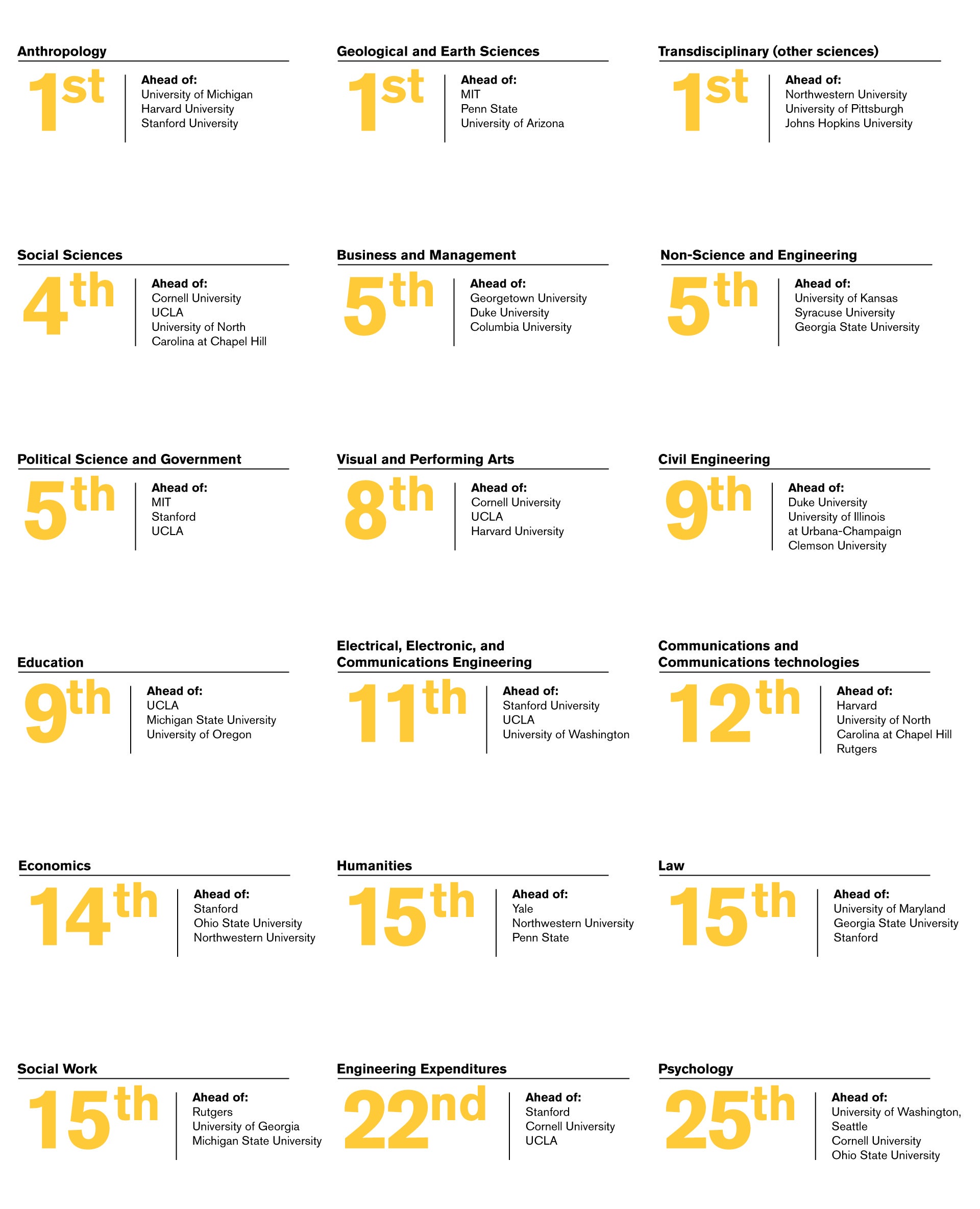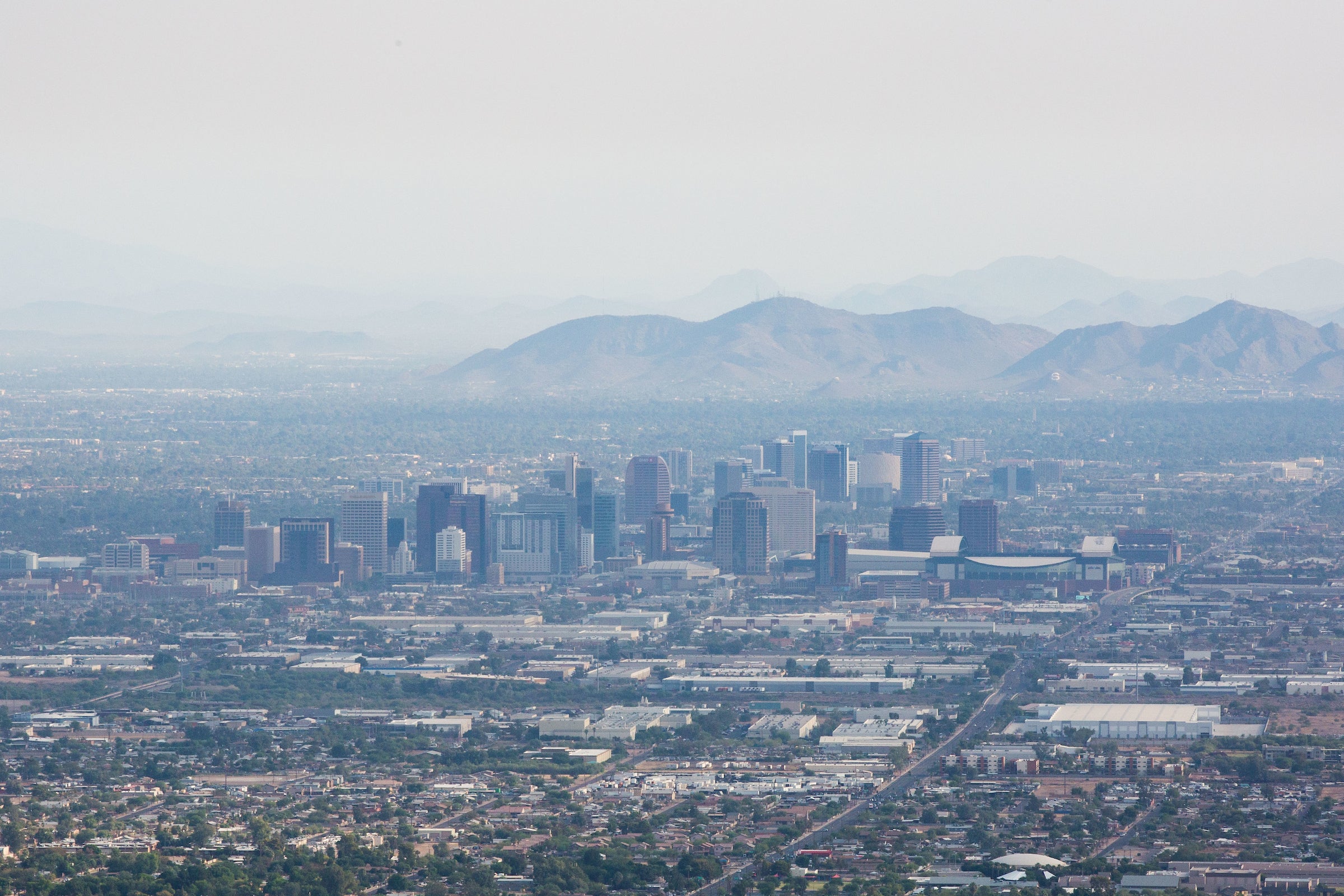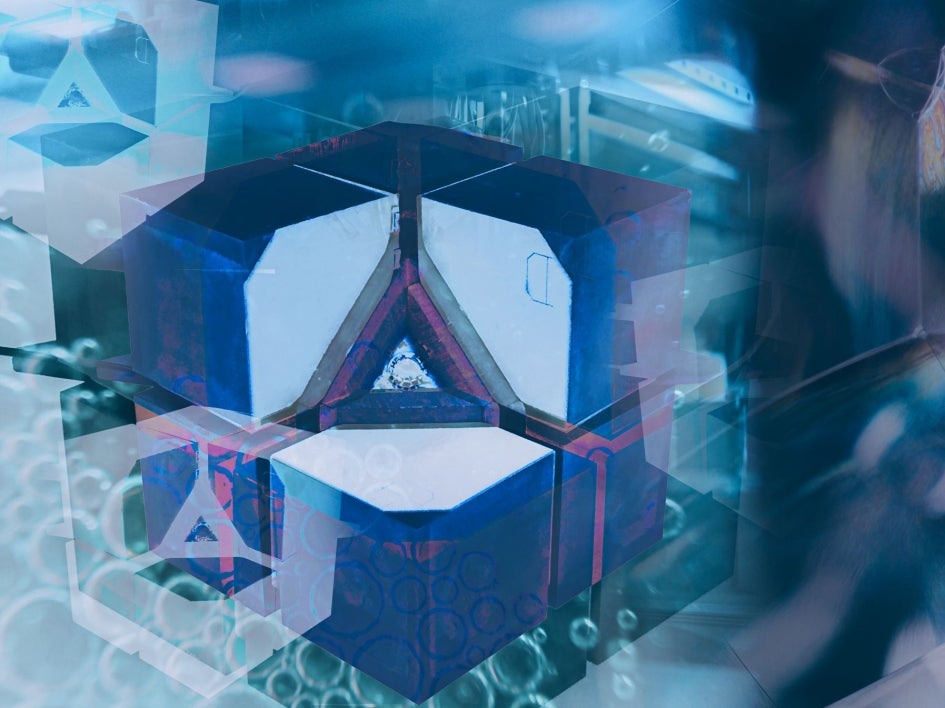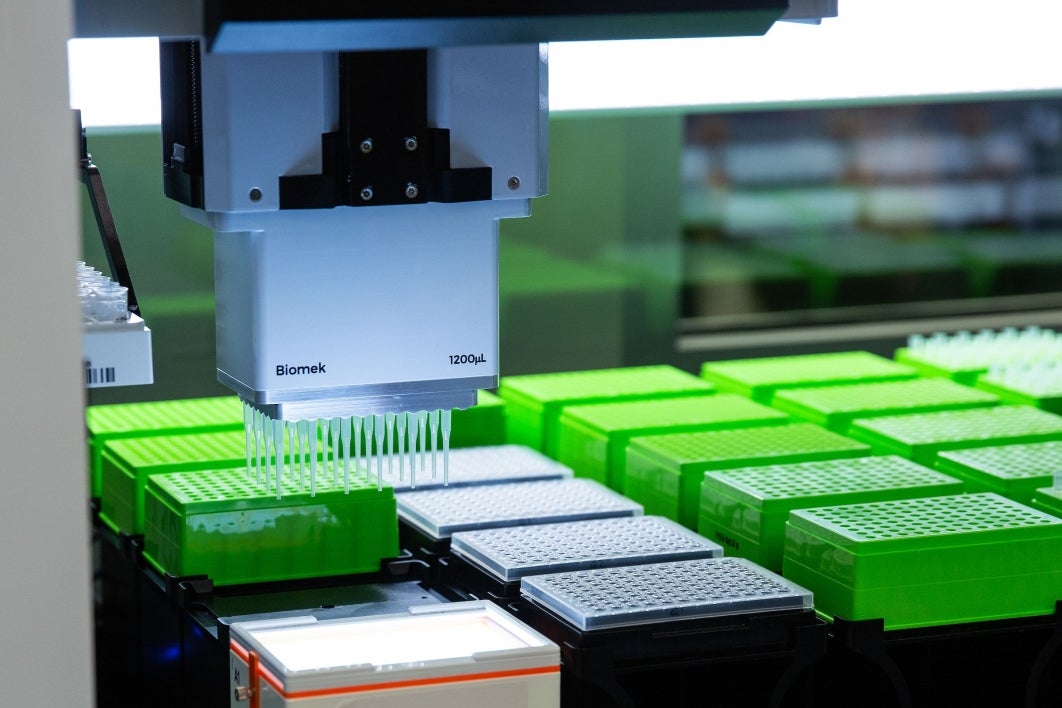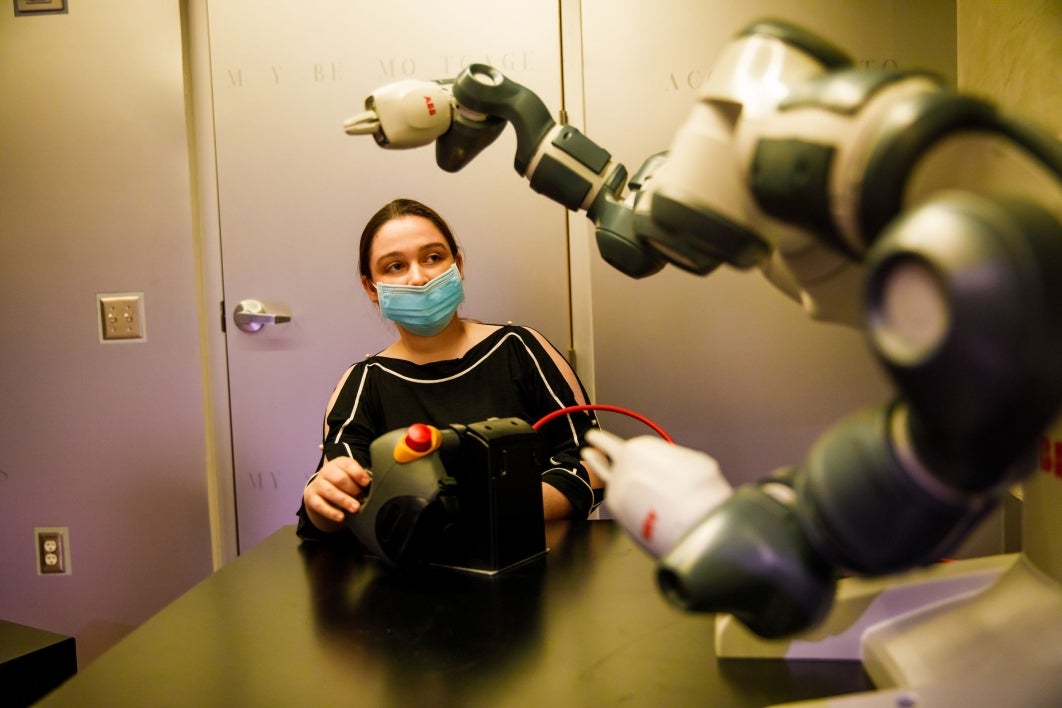ASU increases research activity by nearly 6 times over past 20 years

Editor’s note: This story is featured in the 2022 year in review.
Whether exploring the interiors of planets, running the longest ecological study of a desert city, tracking virus variants of the COVID-19 pandemic, or helping people and robots work together, Arizona State University has become an innovation powerhouse of leading researchers and transdisciplinary schools making an impact on our local and global communities.
With $677.7 million in research expenditures in fiscal year 2021, ASU ranked No. 6 among 750 other institutions without a medical school, ahead of Carnegie Mellon University, Princeton University and the California Institute of Technology, according to the National Science Foundation Higher Education Research and Development rankings.
NSF’s annual HERD survey collects and ranks research expenditure information from hundreds of institutions nationwide. It is the official NSF report on expenditures within higher education institutions in the United States and outlying areas covering the previous academic fiscal year.
“As a public university, we have a responsibility to serve our communities in ways that make a difference. By advancing scientific discovery that benefits life on Earth, we are on a path to imagine a sustainable global future and support a thriving planet, thriving people and a thriving society,” said Sally C. Morton, executive vice president of Knowledge Enterprise at ASU.
According to the HERD survey, ASU ranks in the top 25 among all U.S. public institutions (25th of 412), ahead of the University of California, Irvine, the University of Colorado and Virginia Tech.
Overall, ASU ranked in the top 5% of all universities with research expenditures, placing 42nd out of 910 universities nationwide with or without a medical school, ahead of the University of Chicago, Brown University and Princeton University.
ASU receives funding for research from federal agencies, state and local grants, businesses and other private organizations, which is often awarded over multiyear periods. Research expenditures — the amount of this funding an institution spends in a particular year — provide the most effective way to measure and compare research enterprises.
Among federally funded research sources, ASU ranked No. 6 in spending of NASA funds, ahead of the University of California, Berkeley, Massachusetts Institute of Technology and University of Michigan. ASU ranked No. 9 for spending of health and human services funds among institutions without a medical school, ahead of Princeton, Georgia Institute of Technology and Colorado State University. ASU ranked No. 18 in NSF-funded expenditures, ahead of the University of Chicago, John Hopkins University and Harvard.
The university’s sponsored expenditures from state and local government (No. 26) and business (No. 61) also saw increases in FY21 when compared to other institutions.
ASU also achieved top rankings of expenditures in academic disciplines:
• No. 1 (of 253) in transdisciplinary, multidisciplinary and other sciences, ahead of Northwestern University, Johns Hopkins University, University of Pittsburgh and Ohio State University.
• No. 1 (of 360) in geological and earth sciences, ahead of Massachusetts Institute of Technology, Pennsylvania State University, Virginia Tech and University of Arizona.
• No. 1 (of 244) in anthropology, ahead of University of Michigan, Harvard University, Stanford University and University of Arizona.
• No. 5 (of 553) in nonscience and engineering, ahead of University of Kansas, Florida State University and Georgia State University.
• No. 8 (of 317) in visual and performing arts, ahead of the University of Southern California, Princeton University and Cornell University.
• No. 9 (of 265) in civil engineering, ahead of Stanford University, Massachusetts Institute of Technology and the Georgia Institute of Technology.
• No. 11 (of 292) in electrical, electronic and communications engineering, ahead of Stanford University, Carnegie Mellon University and University of Southern California.
• No. 15 (of 195) in social work, ahead of Boston University, the University of Utah and Michigan State University.
ASU has a history of rapidly growing its research capacity, leading to solutions for complex problems like climate change as well as advances in new scientific fields like ultrashort X-ray technology. In fact, during the past two decades, ASU has increased the scale and scope of its research activity nearly six times over.
Here are a few examples of how ASU research is making a positive impact.
Desert city discoveries
For the past 25 years, scientists at ASU have been studying the Phoenix metropolitan area as an ecosystem in the Central Arizona–Phoenix Long-Term Ecological Research, or CAP LTER, project. Their findings have offered insights into the well-being of our own desert landscape as well as desert cities worldwide, which are home to a third of the world’s population.
“Cities are ecosystems. And they’re different because they have a built environment and they have a very, very dominant species — people — that operate by different rules. We have culture and institutions and things that other species don’t,” said Nancy Grimm, a Regents Professor in ASU’s School of Life Sciences at ASU and a founding director of the CAP LTER project.
CAP LTER is part of the National Science Foundation’s Long-Term Ecological Research Network, which started in 1980. LTER sites advance our understanding of the nation’s ecosystems and inform scientists, policymakers and the public with the knowledge needed to conserve and protect them.
CAP LTER researchers have published more than 800 articles in research journals to date. Their findings cover topics like animals, plants, water, soils, infrastructure and human behavior — and the interactions among them.
This body of work helped establish the field of urban ecology and provides a basis for government and community leaders to discuss the long-term future of the Phoenix area.
MORE: Life in the city: ASU a powerhouse of urban ecology research
For the past 25 years, scientists at ASU have been studying the Phoenix metropolitan area as an ecosystem in CAP LTER project. Photo by Deanna Dent/ASU
Working under pressure
The Facility for Open Research in a Compressed Environment, or FORCE, has the tools researchers need to explore new materials, from computer chips that fuel the knowledge economy to the inner workings of planets. The findings from this foundational science will advance technology and our understanding of the universe.
The mission of FORCE is to enable the synthesis of large-volume samples under high-pressure and high-temperature conditions.
“Pressure can dramatically alter the physical property of materials,” said Sang-Heon Shim, a researcher with FORCE and an associate professor with the School of Earth and Space Exploration. “The most classic example is diamond, which is pure carbon. The form of carbon that is stable at room condition is graphite, which is used in pencil cores. So, if you think about a pencil core versus a diamond, they are hugely different in terms of material properties. A diamond has greater value because of its strength and optical properties.”
High-tech machine presses and thermodynamic sensor technologies create and measure extremely high pressure and temperature conditions. Under these conditions, materials undergo subtle changes that alter their atomic structure — forming entirely new materials — or alter their properties, unlocking new uses.
These extreme conditions also mimic the interiors of planets. FORCE allows scientists to gain a deeper understanding of the origins of our own planet and others across the solar system and beyond.
MORE: The 'FORCE' is with ASU, thanks to a $13.7M NSF grant
High-tech machine presses and thermodynamic sensor technology create and measure extremely high pressure and temperature conditions. Image courtesy of Andy DeLisle
COVID-19 variant vigilance
Efrem Lim is a virologist with ASU’s Biodesign Center for Fundamental and Applied Microbiomics. He leads a lab that studies the community of viruses at work in the human body and how these viruses affect health and disease.
Over the past two years of the COVID-19 pandemic, Lim has helped public health partners in Arizona understand and prevent the spread of the virus, including sequencing viral genomes. Sequencing helps us stay ahead of the SARS-CoV-2 virus as variants like Delta, Alpha and Omicron spread through communities.
Genomic sequencing spells out an organism’s genetic code, revealing how it mutates over time. The letters of the genetic code in a virus can change as it infects and reproduces in the body. In the case of COVID-19, this resulted in dozens of variants that changed the transmissibility and severity of the pandemic over time, causing worldwide waves of infections and deaths.
Lim’s lab participated in a massive effort to track the COVID-19 pandemic in Arizona, working with a coalition of state universities and health agencies that together sequenced the genes of more than 100,000 virus samples. He oversaw a team at ASU that has now sequenced more than 40,000 of those genomes.
“This real-time surveillance makes a difference for public health responses. As scientists, we have a responsibility to care for our communities,” said Lim, an assistant professor with the School of Life Sciences.
By understanding the particular variant present in a community, public health officials and emergency and health care partners can better respond to outbreaks, provide treatments and save lives.
MORE: Milestone: Arizona researchers sequence genomes of more than 100,000 COVID-19 samples
Efrem Lim oversaw a team at ASU that has now sequenced the genomes of more than 40,000 SARS-CoV-2 virus samples. Photo courtesy Andy DeLisle
When robots join the team
ASU’s Center for Human, Artificial Intelligence, and Robot Teaming, or CHART, studies how humans and intelligent systems work in teams — an increasingly important capability for areas like health care, manufacturing, transportation, space exploration and defense technologies.
“Humans do higher-level cognition, adapt well to novel events and can solve problems on the fly. AI’s superpower is that it’s very fast computationally. It can take in, remember and manage lots and lots of data,” said Nancy Cooke, a professor of human systems engineering in the Ira A. Fulton Schools of Engineering at ASU’s Polytechnic School and director of CHART, a unit of ASU’s Global Security Initiative.
At CHART, robotics engineers and computer scientists work closely with researchers from social sciences, law and the arts to understand communication, coordination, and legal and ethical implications for these teams.
One outcome of this interdisciplinary approach is the General Human Operation of Systems as Teams, or GHOST, Lab. The lab is both an art installation and a scientific test bed that explores how humans can develop trust in robots and AI so they can work together seamlessly on space exploration missions.
MORE: CHART-ing the future of space exploration
An ASU researcher learns how to team with a robot at a new test bed on the Polytechnic campus.
“Our faculty, students and staff are collaborative, innovative and dedicated, which is evident in ASU’s continued top national research rankings,” Morton said. “Together, we are changing the way the world solves problems.”
Written by Mikala Kass, ASU Knowledge Enterprise.




